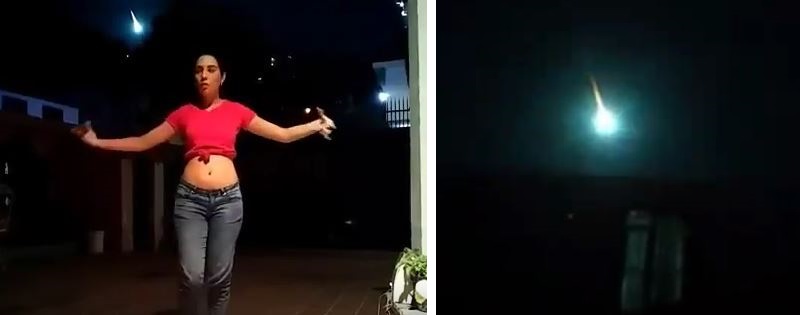On February 9, 2019, around 23h 20min UT (which equals 19h 20min, local time), a bright fireball enlightened the sky over Venezuela. It was recorded by 5 cameras and a meteorological satellite. Analysis of all those data by a BRAMON team led to the reconstruction of the meteoroid atmospheric trajectory, and helps in searching for potential meteorites.

A very bright fireball was observed (9 reports from Cuba and Venezuela) and recorded by five cameras on February 9, 2019, around 23h 20min UT (19h 30min local time). It flew above the region of Valencia, in Venezuela. Despite the lack of information regarding the videos, a BRAMON (BRazilian Meteor Observing Network) team tried to build the meteoroid atmospheric trajectory. Using video recordings and data anomaly detected in the radar images of the GOES-16 meteorological satellite, they manage to calculate the rough trajectory of the object.
Features of the meteor :
- Duration: 6.1 seconds
- Length of the trajectory: 160 km (123 km ground-projected path)
- Entrance Angle: 40° with respect to the horizontal
- Speed: 26 km/s
- Start altitude: 104 km
- Final Altitude: 25 km
Seen the fireball characterisitcs, meteorites could have survived the reentry. A more accurate definition of the trajectory would help in defining the research area. All information regarding the event are thus highly welcome! More information on the dedicated webpage of the BRAMON website.
NOTE: BRAMON is the 28th organization involved in the Fireball Program. Online Fireball Report in Brazilian is now available!




 You saw something bright and fast? Like a huge shooting star? Report it: it may be a fireball.
You saw something bright and fast? Like a huge shooting star? Report it: it may be a fireball.  You counted meteors last night? Share your results with us!
You counted meteors last night? Share your results with us!  You took a photo of a meteor or fireball? You have a screenshot of your cam? Share it with us!
You took a photo of a meteor or fireball? You have a screenshot of your cam? Share it with us!  You caught a meteor or fireball on video? Share your video with us!
You caught a meteor or fireball on video? Share your video with us!